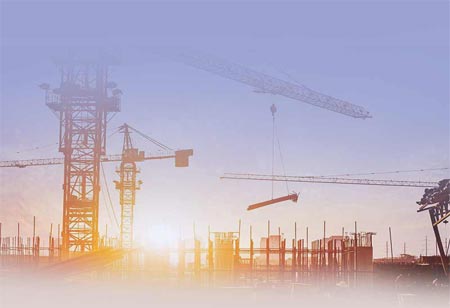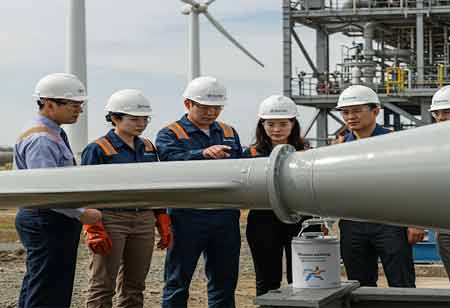Thank you for Subscribing to Construction Business Review Weekly Brief
Specials
- Apartment and Condominium Contractors Canada
- Decking Canada
- Architectural Glass Europe
- MEP APAC
- Construction Saudi Arabia
- German Apartment and Condominium Contractors
- Construction Law APAC
- Outdoor Construction
- Foundation Construction Canada
- MEP Canada
- Kitchen and Bath
- Cold Storage Construction APAC
- Precast Concrete Europe
- Construction Staffing Europe
- Pre-Construction Services
- Flooring System APAC
- Scaffolding Canada
- Swimming Pool Construction Canada
- Construction Management Canada
- Cold Storage Construction Canada
- Flooring Systems Europe
- Residential Construction
- Concrete Canada
- Construction Cladding Europe
- Construction Cladding APAC
- Concretes, Aggregates and Construction Materials APAC
- Concretes, Aggregates and Construction Materials Europe
- Commercial Contractors Europe
- Commercial Contractors APAC
- Dummy
- Construction Insulation, Coating and Waterproofing
- Construction Management APAC
- Landscaping Canada
- Construction Coating Europe
- Construction Tech Startups Europe
- Insulation Services Europe
- Mechanical Contractor Canada
- Mould Remediation and Testing Europe
- Swimming Pool Construction APAC
- Building Sealing Solutions Europe
- Construction Engineering Services
- Mechanical Electrical and Plumbing
- Roofing Systems Europe
- Architectural Glass APAC
- Startups APAC
- Construction Forensic and Owners Representative
- Flooring System
- Waterproofing APAC
- Wall Systems
- Safety and Compliance Europe
- Construction Equipment
- Modular and Prefab Construction
- Architectural Glass
- Construction MENA
- Construction Demolition and Recycling Europe
- Modular Construction Europe
- Construction Interiors
- Steel Building APAC
- HVAC
- Doors and windows
- Modular Construction APAC
- Building Information Modeling APAC
- Sustainable Construction APAC
- Building Restoration and Maintenance
- Commercial Contractors
- Specialty Construction
- Construction Engineering Canada
- Construction Engineering MENA
- Modular Construction Canada
- Construction Demolition Canada
- Roofing and Siding Systems
- Construction Latam
- Construction Staffing
- Roofing Systems APAC
- Construction Consulting
- Steel Building Europe
- Construction Demolition and Recycling APAC
- Safety and Compliance APAC
- Concretes, Aggregates and Construction Materials
- Construction Cladding
The Impact of Sustainable Construction on APAC's Carbon Footprint
The Asia-Pacific (APAC) region is home to some of the world's fastest-growing economies, with rapid urbanization and infrastructure development at the forefront.

By
Construction Business Review | Friday, September 22, 2023
Stay ahead of the industry with exclusive feature stories on the top companies, expert insights and the latest news delivered straight to your inbox. Subscribe today.
In the APAC region, where cities are expanding at an unprecedented rate, embracing sustainable construction is not merely an option; it is a necessity.
FREMONT, CA: The Asia-Pacific (APAC) region is home to some of the world's fastest-growing economies, with rapid urbanization and infrastructure development at the forefront. However, this growth has come at a significant environmental cost, primarily in the form of increased carbon emissions. To combat the looming climate crisis, sustainable construction practices have emerged as a crucial solution.
One of the key facets of sustainable construction is energy efficiency. Traditional construction practices often result in energy-inefficient buildings and infrastructure. In contrast, sustainable construction prioritizes the use of energy-efficient materials, designs, and technologies. Buildings constructed using sustainable principles consume less energy for heating, cooling, and lighting, thereby significantly reducing carbon emissions associated with energy production.
Sustainable Materials: The choice of construction materials plays a pivotal role in carbon emissions. Sustainable construction emphasizes the use of eco-friendly, locally sourced, and recycled materials. This reduces the carbon footprint associated with transportation and also minimises the environmental degradation caused by extracting non-renewable resources.
Renewable Energy Integration: Incorporating renewable energy sources, such as solar panels and wind turbines, into construction projects has become increasingly common in APAC. These technologies not only reduce a building's reliance on fossil fuels but also contribute surplus energy back to the grid, thereby offsetting carbon emissions.





